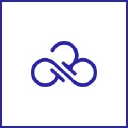
Cloud Security Posture Management (CSPM)
CSPM tools help secure cloud environments by identifying misconfigurations, vulnerabilities, and compliance violations.
| Category | Security Posture Management |
|---|---|
| This page updated | 11 months ago |
| Pricing Details | Contact for pricing details. |
| Target Audience | Organizations using cloud services that require security and compliance management. |
Cloud Security Posture Management (CSPM) tools, such as those offered by Sonrai Security, address the critical challenge of securing complex and dynamic cloud environments by identifying and mitigating misconfigurations, vulnerabilities, and compliance violations.
The technical architecture of CSPM tools involves continuous monitoring and comparison of the cloud environment against a set of predefined best practices, policies, and known security risks. These tools leverage advanced identity and data detection via machine learning (ML) and integrated cloud infrastructure entitlements management (CIEM) capabilities to provide a holistic view of cloud assets and their interactions. This includes monitoring for misconfigurations, such as excessive permissions, unencrypted data storage, and improper access controls, across multiple cloud service providers (CSPs) like AWS, Azure, and Google Cloud.
Key operational considerations include the need for real-time monitoring and automated remediation to address security and compliance drifts promptly. CSPM tools offer centralized visibility into cloud resources, including datastores, VMs, identities, databases, and key vaults, ensuring that organizations can identify and remediate risks before they are exploited. For instance, Sonrai's CSPM solution uses intelligent workflows to prioritize alerts and provide automated remediation options, reducing the burden on security teams and minimizing alert fatigue.
Technical details include the ability to scan specific objects and non-human identities, such as AWS S3 buckets or service accounts, and to enforce granular access control based on identity and context. These tools also support compliance with various standards like GDPR, HIPAA, and NIST 800, by continuously monitoring and enforcing compliance configurations. However, limitations can arise from the complexity of multi-cloud environments and the need for ongoing updates to keep pace with evolving cloud configurations and security best practices.